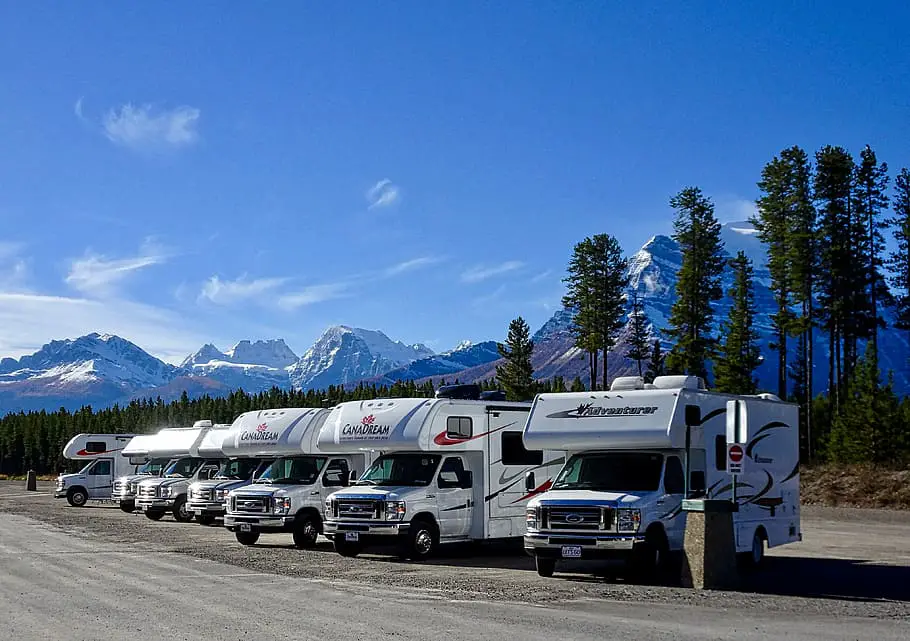Where can I get a loan for an RV?
Getting a loan for an RV can be achieved from many sources these days and may be easier than ever before. RV loans are available at RV dealerships, banks, your local credit union, or one of many online lenders.
If Class C is in your future check out, What is the best brand Class C motorhome? to assist

What credit score is needed to get a loan for an RV?
The consensus is that 700 or over is your best chance of securing an RV loan with a decent rate. The main things lenders research is your creditworthiness, ability to make payments, indebtedness, and low balance credit usage.
Is it easy to get a loan for an RV?
The minimum down payment for an RV is typically between 10% and 20%, but some finance companies also offer “No-Money-Down” loan program options to qualified applicants. Shop around and do your due diligence to find the best rates and payment options.
What is the debt-to-income ratio for an RV loan?
To assure your ability to make your monthly payments lenders will examine your debt-to-income ratio (DTI). Much the same as when you purchase a home loan this is an important factor to determine creditworthiness. Most RV lenders want your DTI to be under 40%.
What is the average rate for an RV loan?
The current average rate for an RV loan is around 6.75%, but some lenders boast rates as low as 2.95% for eligible borrowers. Much different than your typical car loan of 5 years, you can extend these loans out to between 10-15 years depending on the lender and credit score. Of course, these longer terms are usually for newer vehicles and as your RV goes up in age, the length of the terms will significantly drop.
Is an RV loan tax deductible?
The good news is most states allow for tax deductions for the interest of your RV financing. This is typically available whether your RV is your primary or secondary home, though some states may have their own requirements. Usually, states accept this interest on your RV loan as tax-deductible as long as it is equipped with a sleeping area, kitchen, and bathroom (with toilet).
Can someone take over my RV payments?
This would need to be something set up when securing your loan originally, many RV loans are not assumable. That means that the loan cannot be transferred from the seller to the buyer. Due to the fact that the money has already been spent, securing a loan may be easier for this if certain lender requirements are met. Lenders do not want to be in the RV sales business.
How do you finance a 10-year-old RV?
A loan from a bank can be difficult for an RV older than 10 years. Lenders expect to use the unit as collateral and the value is usually just not there after that amount of time. If you need a loan for an older RV, you will need to either get a loan from a credit union or a personal loan, which can require a higher credit score. Of course, there’s always the option to purchase older rigs outright! Cash is King!
Need a loan for an RV? Read this first!
Interest Calculator
The more you borrow and the longer it takes to pay, the overall interest will grow. Know ahead of time what a loan amount will cost you in the long run. You might be surprised! If not careful that 50k dollar RV cost you 100K after all said and done.
RV shopping and Loan search tips
- Set a budget and know your limits before even heading out of the house.
- Shop around and do not settle on the first quote.
- Shop multiple dealerships and attend RV shows, as lenders will also be there.
- Save for adequate down payment – this will reduce the monthly payment amount and the interest paid over the life of the loan.
- Consider the term of the loan and how it affects your payment and overall interest.
- Know your credit score before shopping, as it may need to be addressed ahead of time.
- Don’t be afraid to shop used, you will find better value most of the time if done correctly.

Current rates as of Sept 2021 on a loan for an RV
- Be aware rates change daily – these are just current rates as of today
- Resource – Good Sam Loans
| LOAN AMOUNT | 4-5 YEARS | 5-7 YEARS | 7-10 YEARS | 10-12 YEARS |
| $10,000 – $14,999 | 8.59% | 8.84% | 9.04% | 9.64% |
| $15,000 – $24,999 | 8.09% | 8.34% | 8.54% | 8.64% |
| $25,000 – $49,999 | 4.99% | 5.24% | 5.54% | 5.84% |
| $50,000 – $74,999 | 3.99% | 4.24% | 4.54% | 4.64% |
| $75,000 – $99,999 | 3.99% | 4.24% | 4.54% | 4.64% |
| $100,000 – $149,999 | 3.99% | 4.24% | 4.54% | 4.64% |
| $150,000 – $249,999 | 3.99% | 4.24% | 4.54% | 4.64% |
| $250,000 – $349,999 | 3.99% | 4.24% | 4.54% | 4.64% |
| $350,000 – $499,999 | 3.99% | 4.24% | 4.54% | 4.64% |

Happy Trails!




